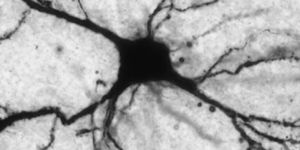Exoplanet Habitability May Depend on the UV Light Emitted by the Host Star
Does the type of light being emitted by a host star impact the probability of life popping up on any of its orbiting exoplanets? Citing a study led by researchers at the U.K.-based Cambridge University, this could be a plausible idea.
Their study, which appears in the journal Science Advances this week, suggests that rocky Earth-like exoplanets sport a higher chance of developing organic processes when their host star emits suitable amounts of ultraviolet (UV) light.
Image Credit: NASA Ames/JPL-Caltech/T. Pyle
UV light is an essential ingredient in some of the chemical reactions that make life possible here on Earth, so the same logic should theoretically apply to distant exoplanets existing outside of our solar system.
"This work allows us to narrow down the best places to search for life," said Dr. Paul Rimmer, the first author of the study. "It brings us just a little bit closer to addressing the question of whether we are alone in the universe."
Related: This might be the darkest exoplanet ever found
Rimmer realized the importance of UV light in an earlier study conducted by colleagues that took place in 2015. In the lab, harnessing the perfect UV exposure levels produced a variety of life-supporting byproducts, including amino acids, lipids, and nucleotides, among other things.
Comparable experiments performed in darkness didn’t yield the same life-supporting byproducts, underlining the importance of UV light in this process.
Based on these findings, Rimmer and colleagues worked together to identify an array of distant exoplanets in which the host star emitted just the right amount of UV light to stimulate similar processes on the surfaces of rocky Earth-like exoplanets.
As it would seem, exoplanets must reside within a certain distance of the host star to receive enough UV light to kickstart these processes. What’s often referred to as the host star’s ‘habitable zone’ can be further broken down into what’s being called the ‘abiogenesis zone,’ which is where the exoplanets also receive adequate levels of UV light.
Many exoplanets previously discovered by NASA’s Kepler Space Telescope, including Kepler 452b, allegedly exist within this so-called abiogenesis zone. That said, it’s conceivable that these worlds could support life, or at least the building blocks necessary to make it possible.
Additional research is needed to confirm these ideas, but the results look promising. Gratefully, NASA’s TESS exoplanet-hunting spacecraft has started scientific operations, and the upcoming James Webb Space Telescope will advance our exoplanet-observing capabilities and shed more light on the matter in the future.
"I'm not sure how contingent life is, but given that we only have one example so far, it makes sense to look for places that are most like us," Rimmer said.
"There's an important distinction between what is necessary and what is sufficient. The building blocks are necessary, but they may not be sufficient: it's possible you could mix them for billions of years, and nothing happens. But you want to at least look at the places where the necessary things exist."
Related: Astronomers capture the formation of a young exoplanet
It should be interesting to see how well the abiogenesis zone theory holds water as astronomers continue their search for life throughout the universe.
Source: Cambridge University









